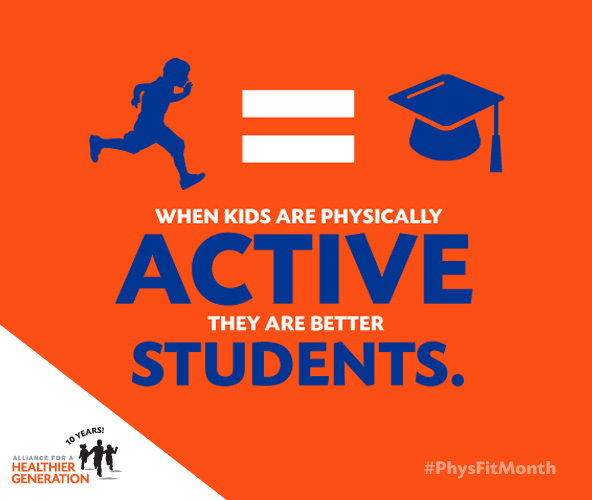Physically Active learning increases student performance and engagement: Findings from a new study

In recent years an increasing number of studies has been published that show that schoolchildren kids who were performing in-classrooms physically active learning tasks, they scored higher on standard academic tests. “We know that there is a strong link between physical activity and academic performance, as well as focus in the classroom", had said American Heart Association CEO Nancy Brown [1].
Very recently, Dutch researchers performed a study with the involvement of second- and third-graders of 24 classes at 12 elementary schools in the Netherlands. Teachers in half of the classes offered traditional lessons, while the rest incorporated physical exercises (jumping, hand movements, etc.) into some math, spelling and reading lessons. School children in *“physically active classrooms” scored higher *on standard math and spelling tests compared with their peers who attended the old-fashioned classes [2].
This study comes to complement several others, which lead to the key message that “physically active learner classes outperform traditional ones” [3, 4].
In fact, in April 2016, 24 researchers from 8 countries and from various academic disciplines organized a conference in Denmark, to share evidences derived from clinically relevant research about physical activity and learning in children and youth [5]. One key message is that the “Physically Active Learning” approach can lead to improvement of student attendance, engagement and behavior as well as reduce of discipline referrals.

As a result, there is an increasing number of non-technologically supported “Physically Active Learning” initiatives. One should highlight the pioneering and comprehensive initiative Let’s Move!, launched by the First Lady Michelle Obama, have beneficial effect on children’s physical and mental health. Another signifficant initiative is the Alliance for a Healthier Generation, founded by the American Heart Association and the Clinton Foundation.
But, how about using the added value of technology and in particular the features of the powerful and low cost Microsoft Kinect motion-sensing device that can track 20 joints of the body to offer “Physically Active Learning” experiences?
Kinems is proposing to combine “movement”, “learning” and “play” using a Kinect personalized movement-based educational gaming platform.
Kinems has shown via research studies that its platform can empower children, especially the ones with learning difficulties, to reach their full potential. These studies have shown that very quickly K-2 children with ADHD can significantly improve their executive functions and cognitive skills as well as their motor skills when engaged into movement-based learning activities (e.g. see research paper [6]).
So, let’s get school children up and moving more often by using motion-based games which should be designed according to effective learning strategies and kinesthetic protocols in order to actually teach the curriculum in a stimulating and personalized way!
References
American Heart Association Praises Reintroduction of FIT Kids Act April 23, 2015.
Marijke J. Mullender-Wijnsma, Esther Hartman, Johannes W. de Greeff, Simone Doolaard, Roel J. Bosker, Chris Visscher (2016). Physically Active Math and Language Lessons Improve Academic Achievement: A Cluster Randomized Controlled Trial. Pediatrics, Mar 2016.
Heidi Syväoja, Marko Kantomaa, Kaarlo Laine, Timo Jaakkola, Kirsi Pyhältö and Tuija Tammelin (2012). Physical Activity and Learning. A summary of a Finnish-language publication of the Finnish National Board of Education entitled “Liikunta ja oppiminen. Tilannekatsaus - lokakuu 2012. URL: http://www.oph.fi/download/145366Physicalactivityandlearning.pdf
eSchool News (2011). ‘Physically active learning’ improves test scores, sharpens concentration”, from Wire Service Reports, May 16th, 2011.
Bangsbo et al. (2016). The Copenhagen Consensus Conference 2016: children, youth and physical activity in schools and during leisure time, British Journal of Sports Medicine, June 27, 2016, doi 10.1136/bjsports-2016-096325. URL: http://bjsm.bmj.com/content/early/2016/05/27/bjsports-2016-096325.full.pdf
Retalis S., Kourakli, M., Altanis, I., Siameti, F., Korpa, T., Skaloumpakas, C., Papadopoulou, P., Lytra, F., Boloudakis, M., Pervanidou P. (2014). Empowering Children With ADHD Learning Disabilities With the Kinems Kinect Learning Games, 8th European Conference on Games Based Learning ECGBL 2014, 8-10 October, Berlin